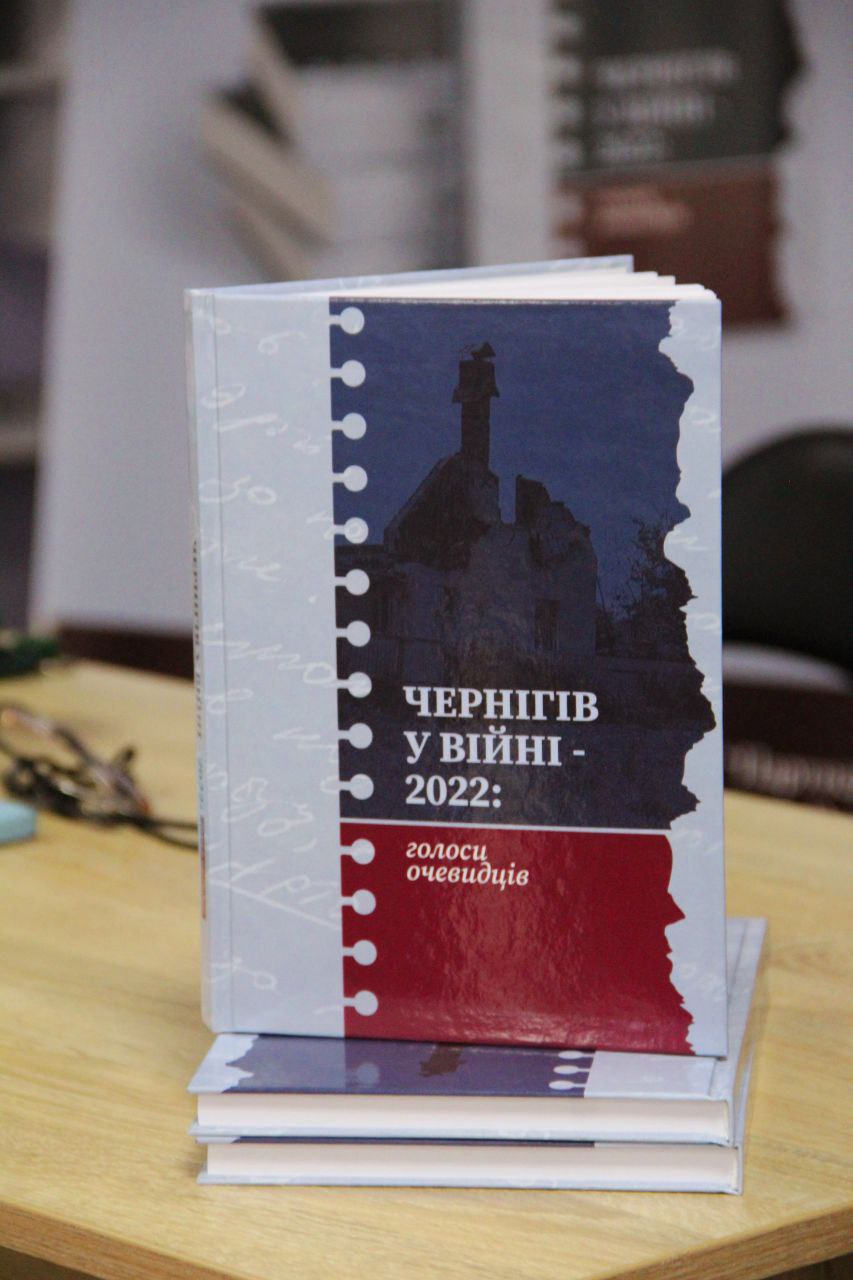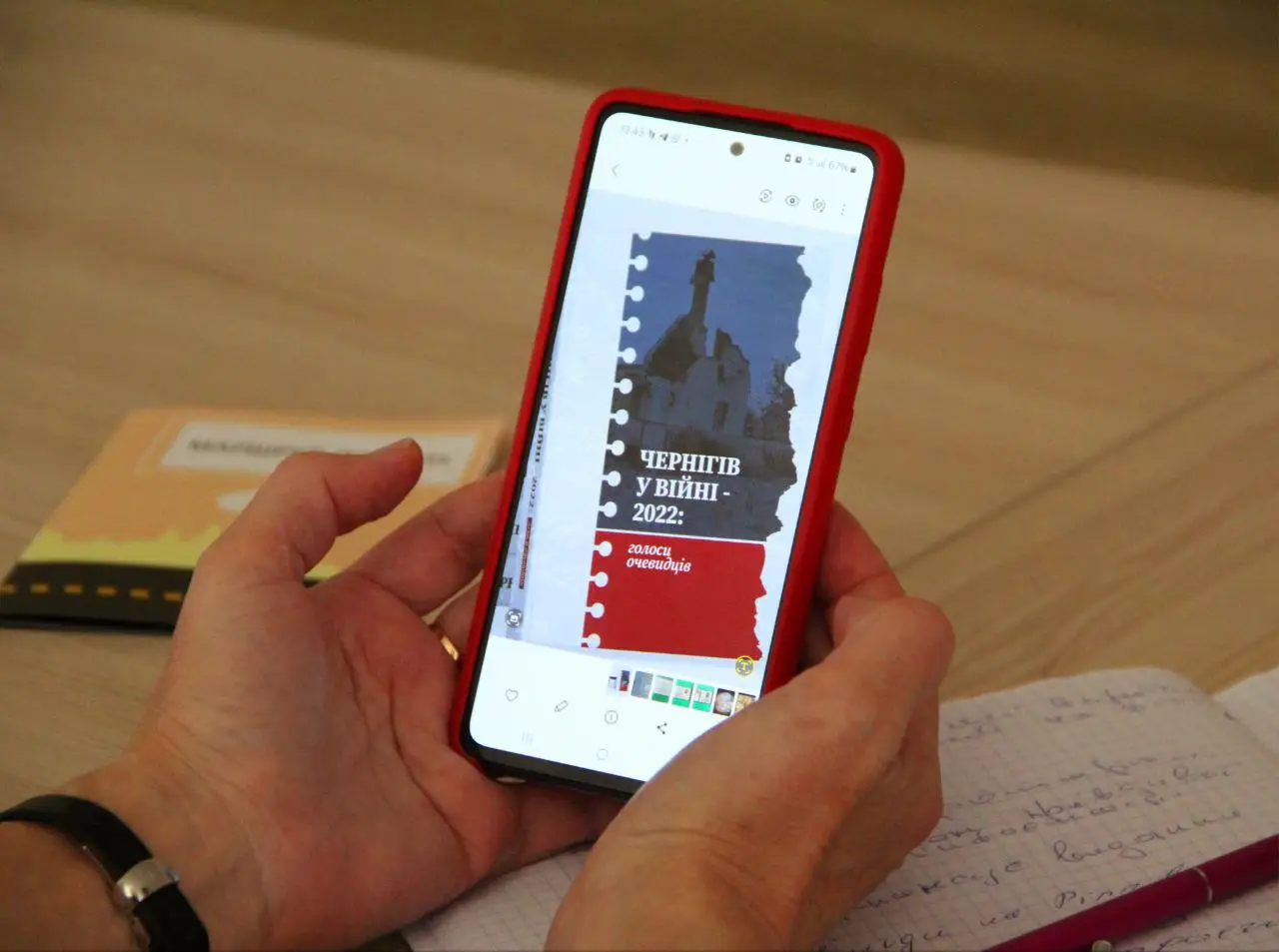
The book "Chernihiv in the War – 2022: Voices of Eyewitnesses" is the result of the work of a team of volunteer scientists from various scientific institutions of Ukraine on the oral history project "Humanitarian aspects of the Russian-Ukrainian war: historical and cultural visions and modern survival strategies." The initiator of the expeditionary research in the newly de-occupied territories of Chernihiv region was Kateryna Lytvyn, Deputy Head of the Department of Culture and Tourism of the Chernihiv City Council and Candidate of Historical Sciences. The settlement where Kateryna, along with her son, left Chernihiv at the beginning of the full-scale invasion, hoping to escape enemy shelling, was under a 36-day occupation.
The purpose of the expeditionary research, in addition to recording Russia's war crimes on the territory of Ukraine, was also to collect oral histories about the specifics of everyday wartime life, the organization of life, nutrition, hygiene, the arrangement of shelters, survival strategies in conditions of occupation, siege, and active hostilities, living conditions during evacuation, the volunteer movement, war folklore, etc. At the time of departure, they had developed four questionnaires on thematic areas: combat operations and siege, occupation, evacuation, and volunteering.
Preparing for field research, the project participants were aware of the responsibility they were taking on. First of all, this concerns the state of psycho-emotional shock and trauma in which potential informants could be. Therefore, a key stage in preparing for work "in the field" was the consulting support of the project by a psychologist with many years of experience working with trauma and post-trauma. In addition, they understood that ethical and legal issues in wartime take on a completely new meaning. At that time, it was unrealistic to carry out long-term trips "to the field," especially considering the volunteer status of the project. The participants of the expedition also constantly changed. Three or four people regularly traveled from Kyiv, and the same number joined them in Chernihiv.
Today, the research team consists of nine people. Since the project participants are involved in various scientific institutions of Ukraine, there was a need to institutionalize team developments. Thus, in 2023, the Chernihiv Research Center for the Anthropology of War was created, which continues to fulfill the tasks of documenting evidence of events in Chernihiv region and studying other humanitarian, socio-cultural, and oral-historical aspects of the Russian-Ukrainian war. So far, they have visited 25 de-occupied settlements of the Chernihiv region, as well as three micro-districts of Chernihiv that suffered the most during the siege and mass shelling of the city in the spring of 2022; recorded testimonies from 218 respondents (212 hours of digital information); and accumulated 1560 photos, three handwritten diaries, and one video diary from the occupation period in the project archive.

